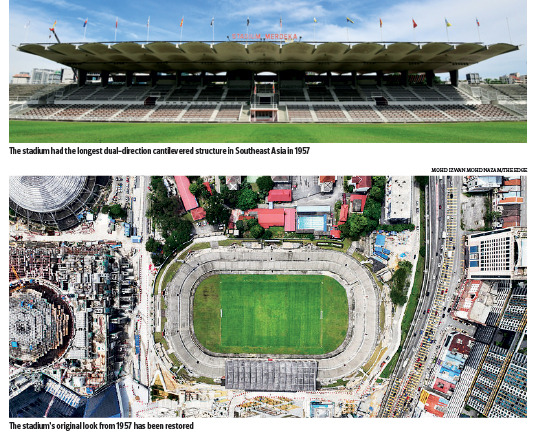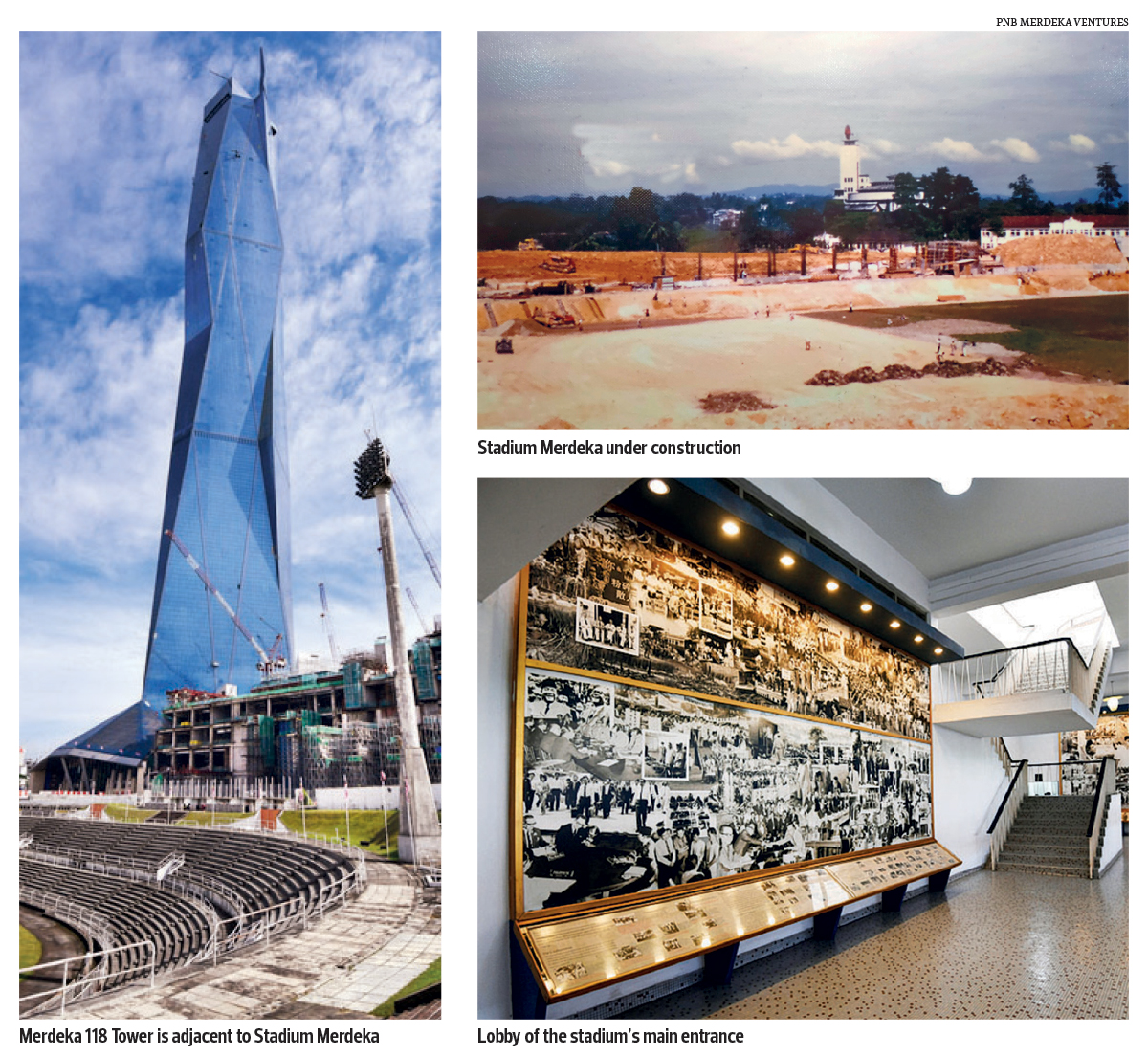
Stadium Merdeka received the Unesco Asia-Pacific 2008 Award for Excellence in Cultural Heritage Conservation (Photo by Patrick Goh/The Edge)
This article first appeared in City & Country, The Edge Malaysia Weekly on August 28, 2023 - September 3, 2023
Stadium Merdeka in Kuala Lumpur is where it all began for the country we call Malaysia. The heritage stadium was the site where the formal declaration of independence of the Federation of Malaya was made on Aug 31, 1957, and then the proclamation of the birth of Malaysia on Sept 16, 1963.
At the time, it had the tallest pre-stressed floodlight towers at 140ft and the longest dual-direction cantilevered structure.
Since then, the stadium has been through several changes, including two renovations in the 1970s and 1980s to add upper concrete terrace blocks to increase the stadium’s capacity to 45,000 seats (from 20,000).
Later, to accommodate the 1989 Southeast Asian Games, more work was done to the stadium, including the installation of new running tracks, repairs to the roofs, enclosing sections of seating and repainting the seating terraces.
Stadium Merdeka continued to be the main venue for major and sporting events in Kuala Lumpur until the completion of the Bukit Jalil National Stadium in the mid-1990s.
Subsequently, Stadium Merdeka and the contiguous sites of Tunku Abdul Rahman Park (also known as Merdeka Park) and Stadium Negara were transferred to United Engineers Malaysia (UEM) for the development of a RM1 billion entertainment and office complex, but the project was later scrapped because of public outcry, coupled with UEM’s financial woes during the 1997/98 Asian economic crisis. The transfer of the sites was in accordance with the agreement for UEM to build Bukit Jalil National Stadium in exchange for the sites.
Permodalan Nasional Bhd (PNB) subsequently acquired the sites of both the stadiums and the former park — currently the site of Merdeka 118.
PNB established the Merdeka Heritage Trust in 2006 to restore, preserve and manage both Stadium Merdeka and Stadium Negara with the aim of promoting Malaysian arts, culture and heritage, sports and a sense of unity among Malaysians.
The stadium received the Unesco Asia-Pacific 2008 Award for Excellence in Cultural Heritage Conservation.
Started in 2006 and completed in 2008, PNB’s restoration works at Stadium Merdeka include the removal of the additional terrace blocks, the removal of the running tracks, the reinstallation of the football field, the reconstruction of the display board, the restoration of the floor tiles at the main entrance as well as the installation of enhanced features such as handicapped facilities.
The stadium currently has amenities such as washrooms with handicapped facilities, parking spaces for 800 cars and 50 buses, lifts for the disabled, holding rooms and prayer rooms.
According to PNB, it is planning to bring back the running track by year’s end for the community to use, as Stadium Merdeka will be operating again and open to the public in 1Q2024.
PNB also plans to organise activities and events in the stadium involving sports (running track and football clubs), heritage (daily guided tours, heritage walks and annual Merdeka-themed celebrations), food (pop-ups and cafés) and lifestyle (collaboration with brands for events).
As for Stadium Negara, a feasibility study has been undertaken to understand the best way to transform it into a commercial asset while preserving its authenticity. The plan is to revive it as a viable venue for indoor sports and entertainment.
Save by subscribing to us for your print and/or digital copy.
P/S: The Edge is also available on Apple's App Store and Android's Google Play.
- Ops Mega enters day two as crews conue post-blaze cleanup
- Trump says talks on Russia-Ukraine war talks might be going OK
- South Korea ex-president Yoon to face trial over martial law: Yonhap
- Iran, US hold 'positive' talks in Oman, agree to resume next week
- Central banks prepare first G-7 responses to US chaos




